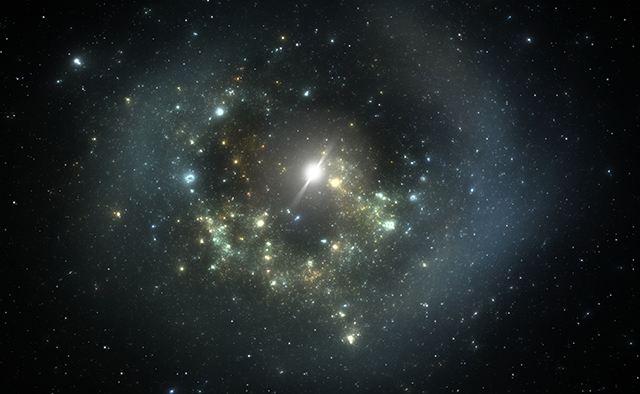Astronomers witness a rocky planet BOILING AWAY, leaving behind a COSMIC TAIL
04/23/2025 / By Lance D Johnson

- A small, rocky planet 140 light-years away is disintegrating at an alarming rate, shedding mass equivalent to Mount Everest every 30.5 hours.
- The planet, BD+05 4868 Ab, is so close to its star that its surface is a molten wasteland, releasing minerals into space that form a comet-like tail stretching millions of miles.
- MIT researchers, using NASA’s TESS satellite, discovered this rare phenomenon — only the fourth known disintegrating exoplanet.
- As it sheds its surface and eventually its core, the exoplanet is on trajectory to vanish completely in a million years.
- The discovery challenges conventional planetary science and raises questions about the fragility of smaller worlds, particularly in harsh stellar environments.
In the constellation Pegasus, a doomed planet is being torn apart by its own star, leaving behind a spectacular trail of molten rock and dust. Astronomers from MIT have identified this rare cosmic tragedy, where a rocky world once similar in size to Mercury is now boiling away into a vast, glowing tail — an event unfolding in real-time and offering a glimpse into the violent mechanics of planetary destruction.
This fleeting observation, made possible by NASA’s Transiting Exoplanet Survey Satellite (TESS), reveals not just the brutality of space but the delicate nature of small, rocky planets subjected to extreme stellar forces. The researchers, who published their findings in The Astrophysical Journal Letters, describe the planet’s demise as a “runaway process” fueled by evaporation, weak gravity and relentless stellar heat.
A world on the edge of oblivion
BD+05 4868 Ab wasn’t discovered deliberately — it was an anomalous signal that caught astronomers by surprise. Unlike the clean, repeating dips of a typical exoplanet transit, this one fluctuated wildly, with a light curve that suggested something far more bizarre: a disintegrating body trailing an immense tail of debris.
“The extent of the tail is gargantuan, stretching up to 9 million kilometers long, or roughly half of the planet’s entire orbit,” says Marc Hon, a postdoctoral researcher at MIT’s Kavli Institute.
For comparison, if Earth had a tail like this, it would stretch beyond the orbit of Jupiter. The sheer scale of destruction is unmatched in the handful of similar planets observed before. At its current rate of disintegration, the planet will be gone within 1 to 2 million years — a blink of an eye in cosmic terms.
The brutal physics of planetary evaporation
This world’s fate is sealed by its position — orbiting 20 times closer to its star than Mercury does to the Sun—and its small size. With temperatures exceeding 1,600 degrees Celsius (3,000°F), even rock vaporizes, escaping into space as the weak gravity fails to hold the planet together.
Avi Shporer, a researcher at the TESS Science Office, likens it to “a runaway process, and it’s only getting worse and worse for the planet.” Unlike Earth, with its thick atmosphere and strong gravity, this smaller world lacks the defenses to survive in such a hostile environment.
Only four such disintegrating planets have ever been found, all with tails but none as dramatic as this one. The discovery raises bigger questions: could this be the fate of most small planets near their stars? And what does this tell us about the potential rarity of truly Earth-like worlds?
This summer, astronomers will turn NASA’s James Webb Space Telescope (JWST) toward BD+05 4868 Ab, hoping to analyze the mineral content of its tail—the very essence of its dying crust. “These are weird objects, and the shape of the signal changes over time, which is something that’s difficult for us to find,” Shporer says. “But it’s something we’re actively working on.”
For the latest on astronomy and discoveries in space, check out Space.news.
Sources include:
Submit a correction >>
Tagged Under:
astronomy, astrophysics, breakthrough, Collapse, cosmic events, cosmos, discoveries, exoplanets, MIT, NASA, Pegasus, planetary science, research, Space, space exploration
This article may contain statements that reflect the opinion of the author




















